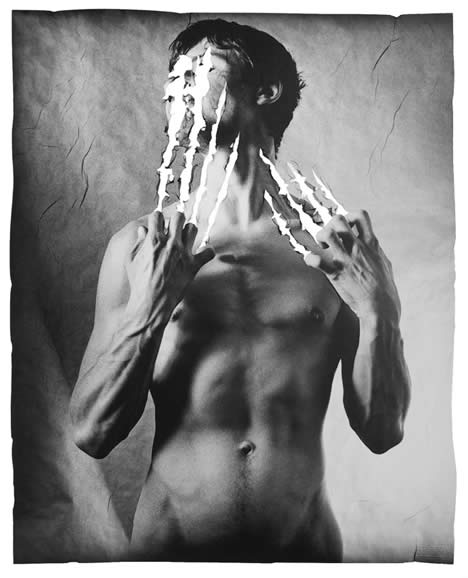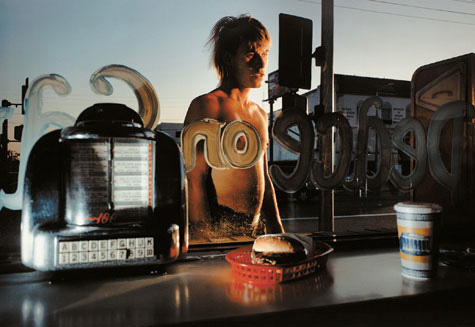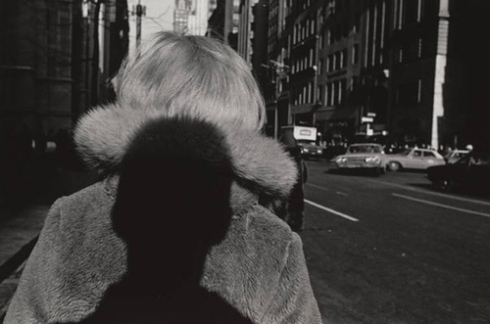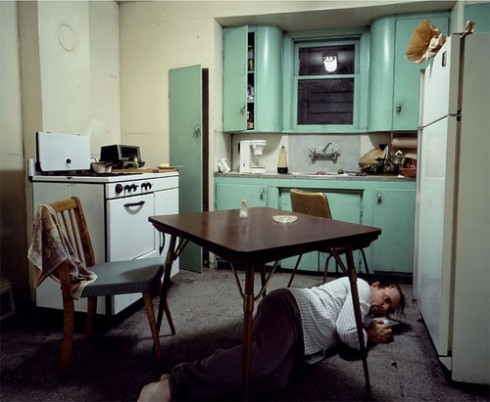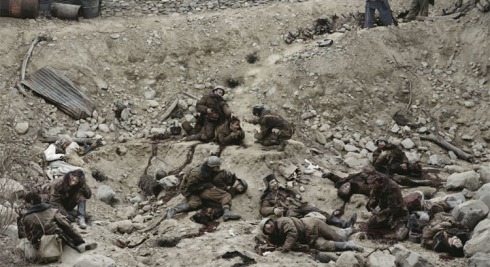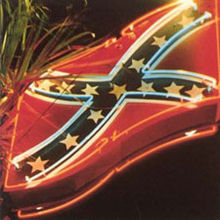Michal Macku is a Czech photographer who is using his own photographic technique called “Gellage” which is a combination of collage and gelatin. Since the end of 1989, he was developing his technique and recently he become well-known in photography world. The technique consists of transfer the exposed and fixed photosensitive emulsion from its original base onto paper. Afterwards the transparent gelatin substance is being moved, reshaped and the images gain different meaning. It results in an impressive and spectacular effects. All the prints are made on photographic quality paper and each Gellage is ready to be exhibited.
Each print is an original work of art as the process is very complicated and sometimes it includes the use of more than one negative per image. That makes it almost impossible to produce identical prints. Macku uses nude human body in his works, mostly his own.
“Through the photographic process [of Gellage], this concrete human body is compelled to meet with abstract surroundings and distortions. This connection is most exciting for me and helps me to find new levels of humanness in the resulting work”. He says that he is always seeking new means of expression and then gradually he discovers unlimited possibilities through his work with “loosened gelatin”. Maku’s work places human bodies in new situations, new contexts, new realities “causing their authentic reality to become relative”.
He is interested in questions of moral and inner freedom as he states. “I do what I feel, and only then do I begin to meditate on what the result is. I am often surprised by the new connections I find in it”.
Compilation of Macku’s work along with music:
Bibliography:


